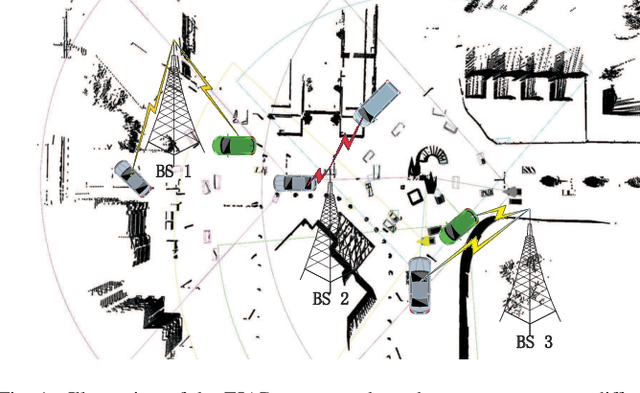Xinrao Li
Large-Scale Bandwidth and Power Optimization for Multi-Modal Edge Intelligence Autonomous Driving
Oct 18, 2022


Abstract:Edge intelligence autonomous driving (EIAD) offers computing resources in autonomous vehicles for training deep neural networks. However, wireless channels between the edge server and autonomous vehicles are time-varying due to the high-mobility of vehicles. Moreover, the required number of training samples for different data modalities (e.g., images, point-clouds) is diverse. Consequently, when collecting these datasets from vehicles to the edge server, the associated bandwidth and power allocation across all data frames is a large-scale multi-modal optimization problem. This article proposes a highly computationally efficient algorithm that directly maximizes the quality of training (QoT). The key ingredients include a data-driven model for quantifying the priority of data modality and two first-order methods termed accelerated gradient projection and dual decomposition for low-complexity resource allocation. High-fidelity simulations in Car Learning to Act (CARLA) show that the proposed algorithm reduces the perception error by $3\%$ and the computation time by $98\%$.
 Add to Chrome
Add to Chrome Add to Firefox
Add to Firefox Add to Edge
Add to Edge